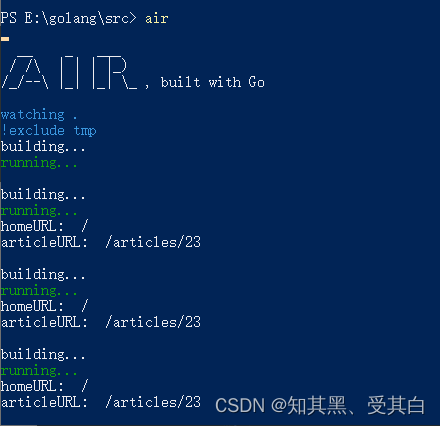requestEventTime
其实在React执行过程中,会有数不清的任务要去执行,但是他们会有一个优先级的判定,假如两个事件的优先级一样,那么React是怎么去判定他们两谁先执行呢?
// packages/react-reconciler/src/ReactFiberWorkLoop.old.js
export function requestEventTime() {
if ((executionContext & (RenderContext | CommitContext)) !== NoContext) {
// We're inside React, so it's fine to read the actual time.
// react事件正在执行
// executionContext
// RenderContext 正在计算
// CommitContext 正在提交
// export const NoContext = /* */ 0b0000000;
// const BatchedContext = /* */ 0b0000001;
// const EventContext = /* */ 0b0000010;
// const DiscreteEventContext = /* */ 0b0000100;
// const LegacyUnbatchedContext = /* */ 0b0001000;
// const RenderContext = /* */ 0b0010000;
// const CommitContext = /* */ 0b0100000;
// export const RetryAfterError = /* */ 0b1000000;
return now();
}
// 没有在react事件执行 NoTimestamp === -1
if (currentEventTime !== NoTimestamp) {
// 浏览器事件正在执行,返回上次的 currentEventTime
return currentEventTime;
}
// 重新计算currentEventTime,当执行被中断后
currentEventTime = now();
return currentEventTime;
}
RenderContext与CommitContext表示正在计算更新和正在提交更新,返回now()。- 如果是浏览器事件正在执行中,返回上一次的
currentEventTime。 - 如果终止或者
中断react任务执行的时候,则重新获取执行时间now()。 - 获取的时间
越小,则执行的优先级越高。
now()并不是单纯的new Date(),而是判定两次更新任务的时间是否小于10ms,来决定是否复用上一次的更新时间Scheduler_now的。
export const now = initialTimeMs < 10000 ? Scheduler_now : () => Scheduler_now() - initialTimeMs;
其实各位猜想一下,对于10ms级别的任务间隙时间,几乎是可以忽略不计的,那么这里就可以视为同样的任务,不需要有很大的性能开销,有利于批量更新。
requestUpdateLane
requestEventTime位每一个需要执行的任务打上了触发更新时间标签,那么任务的优先级还需要进一步的确立,requestUpdateLane就是用来获取每一个任务执行的优先级的。
// packages/react-reconciler/src/ReactFiberWorkLoop.old.js
export function requestUpdateLane(fiber: Fiber): Lane {
// Special cases
const mode = fiber.mode;
if ((mode & BlockingMode) === NoMode) {
return (SyncLane: Lane);
} else if ((mode & ConcurrentMode) === NoMode) {
return getCurrentPriorityLevel() === ImmediateSchedulerPriority
? (SyncLane: Lane)
: (SyncBatchedLane: Lane);
} else if (
!deferRenderPhaseUpdateToNextBatch &&
(executionContext & RenderContext) !== NoContext &&
workInProgressRootRenderLanes !== NoLanes
) {
// This is a render phase update. These are not officially supported. The
// old behavior is to give this the same "thread" (expiration time) as
// whatever is currently rendering. So if you call `setState` on a component
// that happens later in the same render, it will flush. Ideally, we want to
// remove the special case and treat them as if they came from an
// interleaved event. Regardless, this pattern is not officially supported.
// This behavior is only a fallback. The flag only exists until we can roll
// out the setState warning, since existing code might accidentally rely on
// the current behavior.
return pickArbitraryLane(workInProgressRootRenderLanes);
}
// The algorithm for assigning an update to a lane should be stable for all
// updates at the same priority within the same event. To do this, the inputs
// to the algorithm must be the same. For example, we use the `renderLanes`
// to avoid choosing a lane that is already in the middle of rendering.
//
// However, the "included" lanes could be mutated in between updates in the
// same event, like if you perform an update inside `flushSync`. Or any other
// code path that might call `prepareFreshStack`.
//
// The trick we use is to cache the first of each of these inputs within an
// event. Then reset the cached values once we can be sure the event is over.
// Our heuristic for that is whenever we enter a concurrent work loop.
//
// We'll do the same for `currentEventPendingLanes` below.
if (currentEventWipLanes === NoLanes) {
currentEventWipLanes = workInProgressRootIncludedLanes;
}
const isTransition = requestCurrentTransition() !== NoTransition;
if (isTransition) {
if (currentEventPendingLanes !== NoLanes) {
currentEventPendingLanes =
mostRecentlyUpdatedRoot !== null
? mostRecentlyUpdatedRoot.pendingLanes
: NoLanes;
}
return findTransitionLane(currentEventWipLanes, currentEventPendingLanes);
}
// TODO: Remove this dependency on the Scheduler priority.
// To do that, we're replacing it with an update lane priority.
// 获取执行任务的优先级,便于调度
const schedulerPriority = getCurrentPriorityLevel();
// The old behavior was using the priority level of the Scheduler.
// This couples React to the Scheduler internals, so we're replacing it
// with the currentUpdateLanePriority above. As an example of how this
// could be problematic, if we're not inside `Scheduler.runWithPriority`,
// then we'll get the priority of the current running Scheduler task,
// which is probably not what we want.
let lane;
if (
// TODO: Temporary. We're removing the concept of discrete updates.
(executionContext & DiscreteEventContext) !== NoContext &&
// 用户block的类型事件
schedulerPriority === UserBlockingSchedulerPriority
) {
// 通过findUpdateLane函数重新计算lane
lane = findUpdateLane(InputDiscreteLanePriority, currentEventWipLanes);
} else {
// 根据优先级计算法则计算lane
const schedulerLanePriority = schedulerPriorityToLanePriority(
schedulerPriority,
);
if (decoupleUpdatePriorityFromScheduler) {
// In the new strategy, we will track the current update lane priority
// inside React and use that priority to select a lane for this update.
// For now, we're just logging when they're different so we can assess.
const currentUpdateLanePriority = getCurrentUpdateLanePriority();
if (
schedulerLanePriority !== currentUpdateLanePriority &&
currentUpdateLanePriority !== NoLanePriority
) {
if (__DEV__) {
console.error(
'Expected current scheduler lane priority %s to match current update lane priority %s',
schedulerLanePriority,
currentUpdateLanePriority,
);
}
}
}
// 根据计算得到的 schedulerLanePriority,计算更新的优先级 lane
lane = findUpdateLane(schedulerLanePriority, currentEventWipLanes);
}
return lane;
}
- 通过
getCurrentPriorityLevel获得所有执行任务的调度优先级schedulerPriority。 - 通过
findUpdateLane计算lane,作为更新中的优先级。
findUpdateLane
export function findUpdateLane(
lanePriority: LanePriority, wipLanes: Lanes,
): Lane {
switch (lanePriority) {
case NoLanePriority:
break;
case SyncLanePriority:
return SyncLane;
case SyncBatchedLanePriority:
return SyncBatchedLane;
case InputDiscreteLanePriority: {
const lane = pickArbitraryLane(InputDiscreteLanes & ~wipLanes);
if (lane === NoLane) {
// Shift to the next priority level
return findUpdateLane(InputContinuousLanePriority, wipLanes);
}
return lane;
}
case InputContinuousLanePriority: {
const lane = pickArbitraryLane(InputContinuousLanes & ~wipLanes);
if (lane === NoLane) {
// Shift to the next priority level
return findUpdateLane(DefaultLanePriority, wipLanes);
}
return lane;
}
case DefaultLanePriority: {
let lane = pickArbitraryLane(DefaultLanes & ~wipLanes);
if (lane === NoLane) {
// If all the default lanes are already being worked on, look for a
// lane in the transition range.
lane = pickArbitraryLane(TransitionLanes & ~wipLanes);
if (lane === NoLane) {
// All the transition lanes are taken, too. This should be very
// rare, but as a last resort, pick a default lane. This will have
// the effect of interrupting the current work-in-progress render.
lane = pickArbitraryLane(DefaultLanes);
}
}
return lane;
}
case TransitionPriority: // Should be handled by findTransitionLane instead
case RetryLanePriority: // Should be handled by findRetryLane instead
break;
case IdleLanePriority:
let lane = pickArbitraryLane(IdleLanes & ~wipLanes);
if (lane === NoLane) {
lane = pickArbitraryLane(IdleLanes);
}
return lane;
default:
// The remaining priorities are not valid for updates
break;
}
invariant(
false,
'Invalid update priority: %s. This is a bug in React.',
lanePriority,
);
}
相关参考视频讲解:进入学习
lanePriority: LanePriority
export opaque type LanePriority =
| 0
| 1
| 2
| 3
| 4
| 5
| 6
| 7
| 8
| 9
| 10
| 11
| 12
| 13
| 14
| 15
| 16
| 17;
export opaque type Lanes = number;
export opaque type Lane = number;
export opaque type LaneMap<T> = Array<T>;
import {
ImmediatePriority as ImmediateSchedulerPriority,
UserBlockingPriority as UserBlockingSchedulerPriority,
NormalPriority as NormalSchedulerPriority,
LowPriority as LowSchedulerPriority,
IdlePriority as IdleSchedulerPriority,
NoPriority as NoSchedulerPriority,
} from './SchedulerWithReactIntegration.new';
// 同步任务
export const SyncLanePriority: LanePriority = 15;
export const SyncBatchedLanePriority: LanePriority = 14;
// 用户事件
const InputDiscreteHydrationLanePriority: LanePriority = 13;
export const InputDiscreteLanePriority: LanePriority = 12;
const InputContinuousHydrationLanePriority: LanePriority = 11;
export const InputContinuousLanePriority: LanePriority = 10;
const DefaultHydrationLanePriority: LanePriority = 9;
export const DefaultLanePriority: LanePriority = 8;
const TransitionHydrationPriority: LanePriority = 7;
export const TransitionPriority: LanePriority = 6;
const RetryLanePriority: LanePriority = 5;
const SelectiveHydrationLanePriority: LanePriority = 4;
const IdleHydrationLanePriority: LanePriority = 3;
const IdleLanePriority: LanePriority = 2;
const OffscreenLanePriority: LanePriority = 1;
export const NoLanePriority: LanePriority = 0;
createUpdate
export function createUpdate(eventTime: number, lane: Lane): Update<*> {
const update: Update<*> = {
eventTime, // 更新时间
lane, // 优先级
tag: UpdateState,//更新
payload: null,// 需要更新的内容
callback: null, // 更新完后的回调
next: null, // 指向下一个更新
};
return update;
}
createUpdate函数入参为eventTime和lane,输出一个update对象,而对象中的tag表示此对象要进行什么样的操作。
export const UpdateState = 0;// 更新
export const ReplaceState = 1;//替换
export const ForceUpdate = 2;//强制更新
export const CaptureUpdate = 3;//xx更新
createUpdate就是单纯的给每一个任务进行包装,作为一个个体推入到更新队列中。
enqueueUpdate
export function enqueueUpdate<State>(fiber: Fiber, update: Update<State>) {
// 获取当前更新队列?为啥呢?因为无法保证react是不是还有正在更新或者没有更新完毕的任务
const updateQueue = fiber.updateQueue;
// 如果更新队列为空,则表示fiber还未渲染,直接退出
if (updateQueue === null) {
// Only occurs if the fiber has been unmounted.
return;
}
const sharedQueue: SharedQueue<State> = (updateQueue: any).shared;
const pending = sharedQueue.pending;
if (pending === null) {
// This is the first update. Create a circular list.
// 还记得那个更新对象吗?update.next =>
// 如果pedding位null,表示第一次渲染,那么他的指针为update本身
update.next = update;
} else {
// 将update插入到更新队列循环当中
update.next = pending.next;
pending.next = update;
}
sharedQueue.pending = update;
if (__DEV__) {
if (
currentlyProcessingQueue === sharedQueue &&
!didWarnUpdateInsideUpdate
) {
console.error(
'An update (setState, replaceState, or forceUpdate) was scheduled ' +
'from inside an update function. Update functions should be pure, ' +
'with zero side-effects. Consider using componentDidUpdate or a ' +
'callback.',
);
didWarnUpdateInsideUpdate = true;
}
}
}
- 这一步就是把需要更新的对象,与
fiber更新队列关联起来。
总结
React通过获取事件的优先级,处理具有同样优先级的事件,创建更新对象并与fiber的更新队列关联起来。到这一步updateContainer这个流程就走完了,也下面就是开始他的协调阶段了。
协调与调度
协调与调度的流程大致如图所示:

reconciler流程
React的reconciler流程以scheduleUpdateOnFiber为入口,并在checkForNestedUpdates里面处理任务更新的嵌套层数,如果嵌套层数过大( >50 ),就会认为是无效更新,则会抛出异常。之后便根据markUpdateLaneFromFiberToRoot对当前的fiber树,自底向上的递归fiber的lane,根据lane做二进制比较或者位运算处理。详情如下:
- 如果当前执行任务的优先级为同步,则去判断有无正在执行的
React任务。如果没有则执行ensureRootIsScheduled,进行调度处理。 - 如果当前任务优先级是异步执行,则执行
ensureRootIsScheduled进行调度处理。
export function scheduleUpdateOnFiber(
fiber: Fiber, lane: Lane, eventTime: number,
) {
// 检查嵌套层数,避免是循环做无效操作
checkForNestedUpdates();
warnAboutRenderPhaseUpdatesInDEV(fiber);
// 更新当前更新队列里面的任务优先级,自底而上更新child.fiberLanes
const root = markUpdateLaneFromFiberToRoot(fiber, lane);
if (root === null) {
warnAboutUpdateOnUnmountedFiberInDEV(fiber);
return null;
}
// Mark that the root has a pending update.
// 标记root有更新的,执行它
markRootUpdated(root, lane, eventTime);
if (root === workInProgressRoot) {
// Received an update to a tree that's in the middle of rendering. Mark
// that there was an interleaved update work on this root. Unless the
// `deferRenderPhaseUpdateToNextBatch` flag is off and this is a render
// phase update. In that case, we don't treat render phase updates as if
// they were interleaved, for backwards compat reasons.
if (
deferRenderPhaseUpdateToNextBatch ||
(executionContext & RenderContext) === NoContext
) {
workInProgressRootUpdatedLanes = mergeLanes(
workInProgressRootUpdatedLanes,
lane,
);
}
if (workInProgressRootExitStatus === RootSuspendedWithDelay) {
// The root already suspended with a delay, which means this render
// definitely won't finish. Since we have a new update, let's mark it as
// suspended now, right before marking the incoming update. This has the
// effect of interrupting the current render and switching to the update.
// TODO: Make sure this doesn't override pings that happen while we've
// already started rendering.
markRootSuspended(root, workInProgressRootRenderLanes);
}
}
// TODO: requestUpdateLanePriority also reads the priority. Pass the
// priority as an argument to that function and this one.
// 获取当前优先级层次
const priorityLevel = getCurrentPriorityLevel();
// 同步任务,采用同步更新的方式
if (lane === SyncLane) {
if (
// Check if we're inside unbatchedUpdates
(executionContext & LegacyUnbatchedContext) !== NoContext &&
// Check if we're not already rendering
(executionContext & (RenderContext | CommitContext)) === NoContext
) {
// Register pending interactions on the root to avoid losing traced interaction data.
// 同步而且没有react任务在执行,调用performSyncWorkOnRoot
schedulePendingInteractions(root, lane);
// This is a legacy edge case. The initial mount of a ReactDOM.render-ed
// root inside of batchedUpdates should be synchronous, but layout updates
// should be deferred until the end of the batch.
performSyncWorkOnRoot(root);
} else {
// 如果有正在执行的react任务,那么执行它ensureRootIsScheduled去复用当前正在执行的任务
// 跟本次更新一起进行
ensureRootIsScheduled(root, eventTime);
schedulePendingInteractions(root, lane);
if (executionContext === NoContext) {
// Flush the synchronous work now, unless we're already working or inside
// a batch. This is intentionally inside scheduleUpdateOnFiber instead of
// scheduleCallbackForFiber to preserve the ability to schedule a callback
// without immediately flushing it. We only do this for user-initiated
// updates, to preserve historical behavior of legacy mode.
resetRenderTimer();
flushSyncCallbackQueue();
}
}
} else {
// Schedule a discrete update but only if it's not Sync.
// 如果此次是异步任务
if (
(executionContext & DiscreteEventContext) !== NoContext &&
// Only updates at user-blocking priority or greater are considered
// discrete, even inside a discrete event.
(priorityLevel === UserBlockingSchedulerPriority ||
priorityLevel === ImmediateSchedulerPriority)
) {
// This is the result of a discrete event. Track the lowest priority
// discrete update per root so we can flush them early, if needed.
if (rootsWithPendingDiscreteUpdates === null) {
rootsWithPendingDiscreteUpdates = new Set([root]);
} else {
rootsWithPendingDiscreteUpdates.add(root);
}
}
// Schedule other updates after in case the callback is sync.
// 可以中断更新,只要调用ensureRootIsScheduled => performConcurrentWorkOnRoot
ensureRootIsScheduled(root, eventTime);
schedulePendingInteractions(root, lane);
}
// We use this when assigning a lane for a transition inside
// `requestUpdateLane`. We assume it's the same as the root being updated,
// since in the common case of a single root app it probably is. If it's not
// the same root, then it's not a huge deal, we just might batch more stuff
// together more than necessary.
mostRecentlyUpdatedRoot = root;
}
同步任务类型执行机制
当任务的类型为同步任务,并且当前的js主线程空闲,会通过 performSyncWorkOnRoot(root) 方法开始执行同步任务。
performSyncWorkOnRoot 里面主要做了两件事:
renderRootSync从根节点开始进行同步渲染任务commitRoot执行commit流程
当前js线程中有正在执行的任务时候,就会触发ensureRootIsScheduled函数。 ensureRootIsScheduled里面主要是处理当前加入的更新任务的lane是否有变化:
- 如果没有变化则表示跟当前的
schedule一起执行。 - 如果有则创建新的
schedule。 - 调用
performSyncWorkOnRoot执行同步任务。
function ensureRootIsScheduled(root: FiberRoot, currentTime: number) {
const existingCallbackNode = root.callbackNode;
// Check if any lanes are being starved by other work. If so, mark them as
// expired so we know to work on those next.
markStarvedLanesAsExpired(root, currentTime);
// Determine the next lanes to work on, and their priority.
const nextLanes = getNextLanes(
root,
root === workInProgressRoot ? workInProgressRootRenderLanes : NoLanes,
);
// This returns the priority level computed during the `getNextLanes` call.
const newCallbackPriority = returnNextLanesPriority();
if (nextLanes === NoLanes) {
// Special case: There's nothing to work on.
if (existingCallbackNode !== null) {
cancelCallback(existingCallbackNode);
root.callbackNode = null;
root.callbackPriority = NoLanePriority;
}
return;
}
// Check if there's an existing task. We may be able to reuse it.
if (existingCallbackNode !== null) {
const existingCallbackPriority = root.callbackPriority;
if (existingCallbackPriority === newCallbackPriority) {
// The priority hasn't changed. We can reuse the existing task. Exit.
return;
}
// The priority changed. Cancel the existing callback. We'll schedule a new
// one below.
cancelCallback(existingCallbackNode);
}
// Schedule a new callback.
let newCallbackNode;
if (newCallbackPriority === SyncLanePriority) {
// Special case: Sync React callbacks are scheduled on a special
// internal queue
// 同步任务调用performSyncWorkOnRoot
newCallbackNode = scheduleSyncCallback(
performSyncWorkOnRoot.bind(null, root),
);
} else if (newCallbackPriority === SyncBatchedLanePriority) {
newCallbackNode = scheduleCallback(
ImmediateSchedulerPriority,
performSyncWorkOnRoot.bind(null, root),
);
} else {
// 异步任务调用 performConcurrentWorkOnRoot
const schedulerPriorityLevel = lanePriorityToSchedulerPriority(
newCallbackPriority,
);
newCallbackNode = scheduleCallback(
schedulerPriorityLevel,
performConcurrentWorkOnRoot.bind(null, root),
);
}
root.callbackPriority = newCallbackPriority;
root.callbackNode = newCallbackNode;
}
所以任务类型为同步的时候,不管js线程空闲与否,都会走到performSyncWorkOnRoot,进而走renderRootSync、workLoopSync流程,而在workLoopSync中,只要workInProgress fiber不为null,则会一直循环执行performUnitOfWork,而performUnitOfWork中会去执行beginWork和completeWork,也就是上一章里面说的beginWork流程去创建每一个fiber节点
// packages/react-reconciler/src/ReactFiberWorkLoop.old.js
function workLoopSync() {
while (workInProgress !== null) {
performUnitOfWork(workInProgress);
}
}
异步任务类型执行机制
异步任务则会去执行performConcurrentWorkOnRoot,进而去执行renderRootConcurrent、workLoopConcurrent,但是与同步任务不同的是异步任务是可以中断的,这个可中断的关键字就在于shouldYield,它本身返回值是一个false,为true则可以中断。
// packages/react-reconciler/src/ReactFiberWorkLoop.old.js
function workLoopConcurrent() {
while (workInProgress !== null && !shouldYield()) {
performUnitOfWork(workInProgress);
}
}
每一次在执行performUnitOfWork之前都会关注一下shouldYield()返回值,也就是说的reconciler过程可中断的意思。
shouldYield
// packages\scheduler\src\SchedulerPostTask.js
export function unstable_shouldYield() {
return getCurrentTime() >= deadline;
}
getCurrentTime为new Date(),deadline为浏览器处理每一帧结束时间戳,所以这里表示的是,在浏览器每一帧空闲的时候,才会去处理此任务,如果当前任务在浏览器执行的某一帧里面,则会中断当前任务,等待浏览器当前帧执行完毕,等到下一帧空闲的时候,才会去执行当前任务。
所以不管在workLoopConcurrent还是workLoopSync中,都会根据当前的workInProgress fiber是否为null来进行循环调用performUnitOfWork。根据流程图以及上面说的这一些,可以看得出来从beginWork到completeUnitOfWork这个过程究竟干了什么。
这三章将会讲解fiber树的reconcileChildren过程、completeWork过程、commitMutationEffects…insertOrAppendPlacementNodeIntoContainer(DOM)过程。这里将详细解读v17版本的React的diff算法、虚拟dom到真实dom的创建,函数生命钩子的执行流程等。
performUnitOfWork
function performUnitOfWork(unitOfWork: Fiber): void {
// The current, flushed, state of this fiber is the alternate. Ideally
// nothing should rely on this, but relying on it here means that we don't
// need an additional field on the work in progress.
const current = unitOfWork.alternate;
setCurrentDebugFiberInDEV(unitOfWork);
let next;
if (enableProfilerTimer && (unitOfWork.mode & ProfileMode) !== NoMode) {
startProfilerTimer(unitOfWork);
next = beginWork(current, unitOfWork, subtreeRenderLanes);
stopProfilerTimerIfRunningAndRecordDelta(unitOfWork, true);
} else {
// beginWork
next = beginWork(current, unitOfWork, subtreeRenderLanes);
}
resetCurrentDebugFiberInDEV();
unitOfWork.memoizedProps = unitOfWork.pendingProps;
if (next === null) {
// If this doesn't spawn new work, complete the current work.
// completeUnitOfWork
completeUnitOfWork(unitOfWork);
} else {
workInProgress = next;
}
ReactCurrentOwner.current = null;
}
所以在performUnitOfWork里面,每一次执行beginWork,进行workIngProgress更新,当遍历完毕整棵fiber树之后便会执行completeUnitOfWork。
beginWork
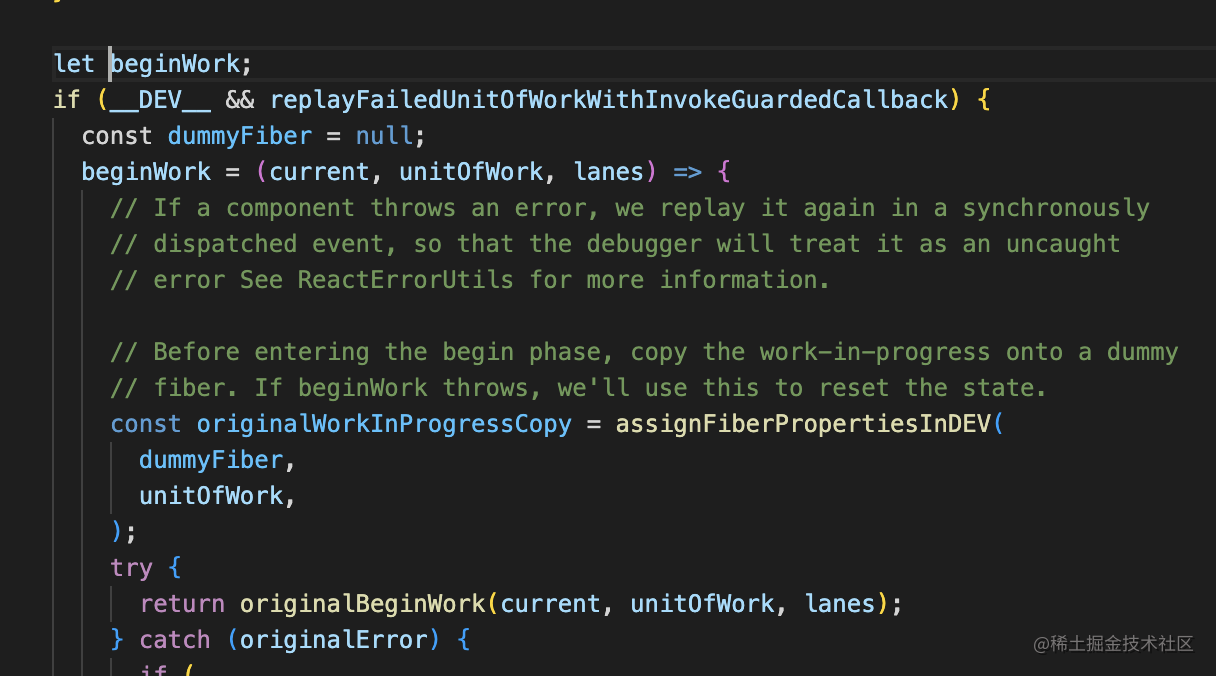

我们可以看到beginWork就是originBeginWork得实际执行。我们翻开beginWork的源码可以看到,它便是根据不同的workInProgress.tag执行不同组件类型的处理函数,这里就不去拆分的太细,只有有想法便会单独出一篇文章讲述这个的细节,但是最后都会去调用reconcileChildren。
completeUnitOfWork
当遍历完毕执行beginWork,遍历完毕之后就会走completeUnitOfWork。
function completeUnitOfWork(unitOfWork: Fiber): void {
// Attempt to complete the current unit of work, then move to the next
// sibling. If there are no more siblings, return to the parent fiber.
let completedWork = unitOfWork;
do {
// The current, flushed, state of this fiber is the alternate. Ideally
// nothing should rely on this, but relying on it here means that we don't
// need an additional field on the work in progress.
const current = completedWork.alternate;
const returnFiber = completedWork.return;
// Check if the work completed or if something threw.
if ((completedWork.flags & Incomplete) === NoFlags) {
setCurrentDebugFiberInDEV(completedWork);
let next;
if (
!enableProfilerTimer ||
(completedWork.mode & ProfileMode) === NoMode
) {
// 绑定事件,更新props,更新dom
next = completeWork(current, completedWork, subtreeRenderLanes);
} else {
startProfilerTimer(completedWork);
next = completeWork(current, completedWork, subtreeRenderLanes);
// Update render duration assuming we didn't error.
stopProfilerTimerIfRunningAndRecordDelta(completedWork, false);
}
resetCurrentDebugFiberInDEV();
if (next !== null) {
// Completing this fiber spawned new work. Work on that next.
workInProgress = next;
return;
}
resetChildLanes(completedWork);
if (
returnFiber !== null &&
// Do not append effects to parents if a sibling failed to complete
(returnFiber.flags & Incomplete) === NoFlags
) {
// Append all the effects of the subtree and this fiber onto the effect
// list of the parent. The completion order of the children affects the
// side-effect order.
// 把已收集到的副作用,合并到父级effect lists中
if (returnFiber.firstEffect === null) {
returnFiber.firstEffect = completedWork.firstEffect;
}
if (completedWork.lastEffect !== null) {
if (returnFiber.lastEffect !== null) {
returnFiber.lastEffect.nextEffect = completedWork.firstEffect;
}
returnFiber.lastEffect = completedWork.lastEffect;
}
// If this fiber had side-effects, we append it AFTER the children's
// side-effects. We can perform certain side-effects earlier if needed,
// by doing multiple passes over the effect list. We don't want to
// schedule our own side-effect on our own list because if end up
// reusing children we'll schedule this effect onto itself since we're
// at the end.
const flags = completedWork.flags;
// Skip both NoWork and PerformedWork tags when creating the effect
// list. PerformedWork effect is read by React DevTools but shouldn't be
// committed.
// 跳过NoWork,PerformedWork在commit阶段用不到
if (flags > PerformedWork) {
if (returnFiber.lastEffect !== null) {
returnFiber.lastEffect.nextEffect = completedWork;
} else {
returnFiber.firstEffect = completedWork;
}
returnFiber.lastEffect = completedWork;
}
}
} else {
// This fiber did not complete because something threw. Pop values off
// the stack without entering the complete phase. If this is a boundary,
// capture values if possible.
const next = unwindWork(completedWork, subtreeRenderLanes);
// Because this fiber did not complete, don't reset its expiration time.
if (next !== null) {
// If completing this work spawned new work, do that next. We'll come
// back here again.
// Since we're restarting, remove anything that is not a host effect
// from the effect tag.
next.flags &= HostEffectMask;
workInProgress = next;
return;
}
if (
enableProfilerTimer &&
(completedWork.mode & ProfileMode) !== NoMode
) {
// Record the render duration for the fiber that errored.
stopProfilerTimerIfRunningAndRecordDelta(completedWork, false);
// Include the time spent working on failed children before continuing.
let actualDuration = completedWork.actualDuration;
let child = completedWork.child;
while (child !== null) {
actualDuration += child.actualDuration;
child = child.sibling;
}
completedWork.actualDuration = actualDuration;
}
if (returnFiber !== null) {
// Mark the parent fiber as incomplete and clear its effect list.
returnFiber.firstEffect = returnFiber.lastEffect = null;
returnFiber.flags |= Incomplete;
}
}
// 兄弟层指针
const siblingFiber = completedWork.sibling;
if (siblingFiber !== null) {
// If there is more work to do in this returnFiber, do that next.
workInProgress = siblingFiber;
return;
}
// Otherwise, return to the parent
completedWork = returnFiber;
// Update the next thing we're working on in case something throws.
workInProgress = completedWork;
} while (completedWork !== null);
// We've reached the root.
if (workInProgressRootExitStatus === RootIncomplete) {
workInProgressRootExitStatus = RootCompleted;
}
}
他的作用便是逐层收集fiber树上已经被打上的副作用标签flags,一直收集到root上面以便于在commit阶段进行dom的增删改。

scheduler流程
在这里应该有很多人不明白,协调和调度是什么意思,通俗来讲:
- 协调就是协同合作
- 调度就是执行命令
所以在React中协调就是一个js线程中,需要安排很多模块去完成整个流程,例如:同步异步lane的处理,reconcileChildren处理fiber节点等,保证整个流程有条不紊的执行。调度表现为让空闲的js线程(帧层面)去执行其他任务,这个过程称之为调度,那么它到底是怎么去做的呢?
我们回到处理异步任务那里,我们会发现performConcurrentWorkOnRoot这个函数外面包裹了一层scheduleCallback:
newCallbackNode = scheduleCallback(
schedulerPriorityLevel,
performConcurrentWorkOnRoot.bind(null, root),
)
export function scheduleCallback(
reactPriorityLevel: ReactPriorityLevel, callback: SchedulerCallback, options: SchedulerCallbackOptions | void | null,
) {
const priorityLevel = reactPriorityToSchedulerPriority(reactPriorityLevel);
return Scheduler_scheduleCallback(priorityLevel, callback, options);
}

我们几经周折找到了声明函数的地方
// packages/scheduler/src/Scheduler.js
function unstable_scheduleCallback(priorityLevel, callback, options) {
var currentTime = getCurrentTime();
var startTime;
if (typeof options === 'object' && options !== null) {
var delay = options.delay;
if (typeof delay === 'number' && delay > 0) {
startTime = currentTime + delay;
} else {
startTime = currentTime;
}
} else {
startTime = currentTime;
}
var timeout;
switch (priorityLevel) {
case ImmediatePriority:
timeout = IMMEDIATE_PRIORITY_TIMEOUT;
break;
case UserBlockingPriority:
timeout = USER_BLOCKING_PRIORITY_TIMEOUT;
break;
case IdlePriority:
timeout = IDLE_PRIORITY_TIMEOUT;
break;
case LowPriority:
timeout = LOW_PRIORITY_TIMEOUT;
break;
case NormalPriority:
default:
timeout = NORMAL_PRIORITY_TIMEOUT;
break;
}
var expirationTime = startTime + timeout;
var newTask = {
id: taskIdCounter++,
callback,
priorityLevel,
startTime,
expirationTime,
sortIndex: -1,
};
if (enableProfiling) {
newTask.isQueued = false;
}
if (startTime > currentTime) {
// This is a delayed task.
newTask.sortIndex = startTime;
push(timerQueue, newTask);
if (peek(taskQueue) === null && newTask === peek(timerQueue)) {
// All tasks are delayed, and this is the task with the earliest delay.
if (isHostTimeoutScheduled) {
// Cancel an existing timeout.
cancelHostTimeout();
} else {
isHostTimeoutScheduled = true;
}
// Schedule a timeout.
requestHostTimeout(handleTimeout, startTime - currentTime);
}
} else {
newTask.sortIndex = expirationTime;
push(taskQueue, newTask);
if (enableProfiling) {
markTaskStart(newTask, currentTime);
newTask.isQueued = true;
}
// Schedule a host callback, if needed. If we're already performing work,
// wait until the next time we yield.
if (!isHostCallbackScheduled && !isPerformingWork) {
isHostCallbackScheduled = true;
requestHostCallback(flushWork);
}
}
return newTask;
}
- 当
starttime > currentTime的时候,表示任务超时,插入超时队列。 - 任务没有超时,插入调度队列
- 执行
requestHostCallback调度任务。
// 创建消息通道
const channel = new MessageChannel();
const port = channel.port2;
channel.port1.onmessage = performWorkUntilDeadline;
// 告知scheduler开始调度
requestHostCallback = function(callback) {
scheduledHostCallback = callback;
if (!isMessageLoopRunning) {
isMessageLoopRunning = true;
port.postMessage(null);
}
};
react通过 new MessageChannel() 创建了消息通道,当发现js线程空闲时,通过postMessage通知 scheduler开始调度。performWorkUntilDeadline函数功能为处理react调度开始时间更新到结束时间。
这里我们要关注一下设备帧速率。
forceFrameRate = function(fps) {
if (fps < 0 || fps > 125) {
// Using console['error'] to evade Babel and ESLint
console['error'](
'forceFrameRate takes a positive int between 0 and 125, ' +
'forcing frame rates higher than 125 fps is not supported',
);
return;
}
if (fps > 0) {
yieldInterval = Math.floor(1000 / fps);
} else {
// reset the framerate
yieldInterval = 5;
}
};
performWorkUntilDeadline
const performWorkUntilDeadline = () => {
if (scheduledHostCallback !== null) {
const currentTime = getCurrentTime();
// Yield after `yieldInterval` ms, regardless of where we are in the vsync
// cycle. This means there's always time remaining at the beginning of
// the message event.
// 更新当前帧结束时间
deadline = currentTime + yieldInterval;
const hasTimeRemaining = true;
try {
const hasMoreWork = scheduledHostCallback(
hasTimeRemaining,
currentTime,
);
// 还有任务就继续执行
if (!hasMoreWork) {
isMessageLoopRunning = false;
scheduledHostCallback = null;
} else {
// If there's more work, schedule the next message event at the end
// of the preceding one.
// 没有就postMessage
port.postMessage(null);
}
} catch (error) {
// If a scheduler task throws, exit the current browser task so the
// error can be observed.
port.postMessage(null);
throw error;
}
} else {
isMessageLoopRunning = false;
}
// Yielding to the browser will give it a chance to paint, so we can
// reset this.
needsPaint = false;
};
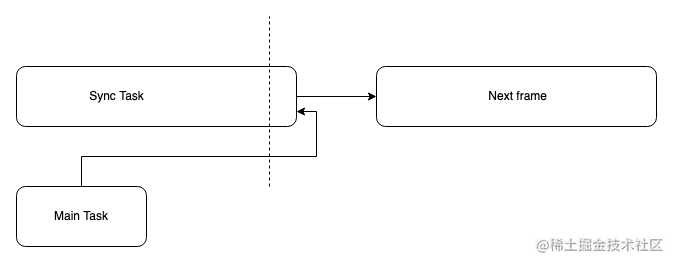
总结
本文讲了React在状态改变的时候,会根据当前任务优先级,等一些列操作去创建workInProgress fiber链表树,在协调阶段,会根据浏览器每一帧去做比较,假如浏览器每一帧执行时间戳高于当前时间,则表示当前帧没有空闲时间,当前任务则必须要等到下一个空闲帧才能去执行的可中断的策略。还有关于beginWork的遍历执行更新fiber的节点。那么到这里这一章就讲述完毕了,下一章讲一讲React的diff算法


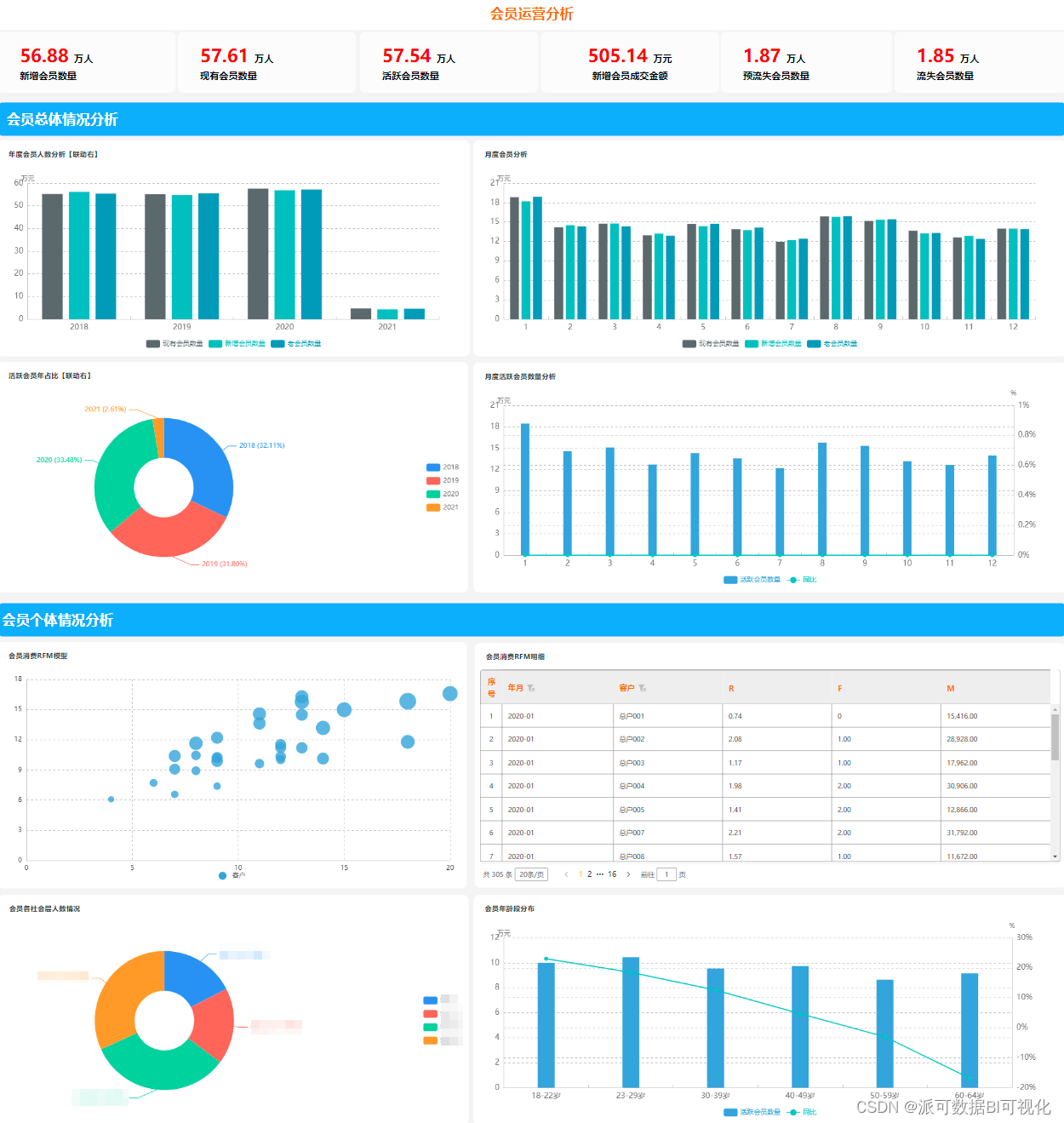
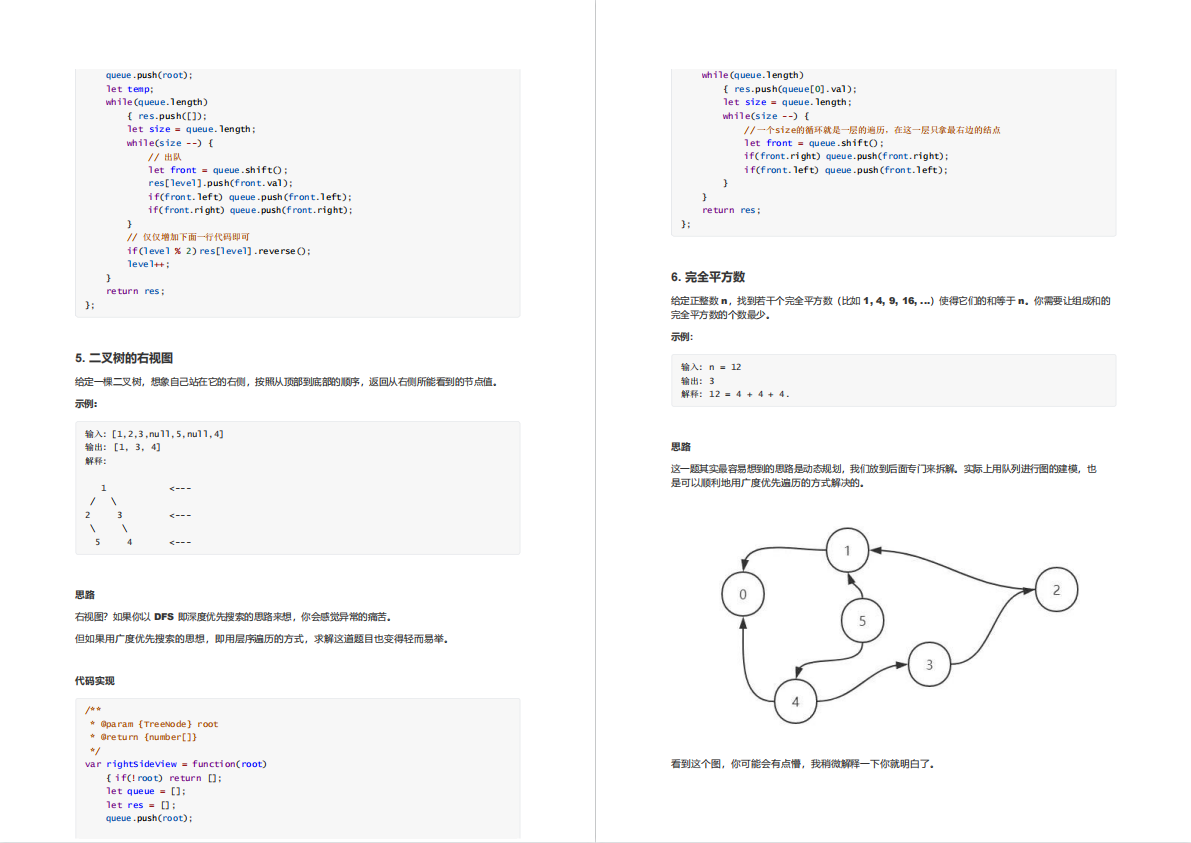
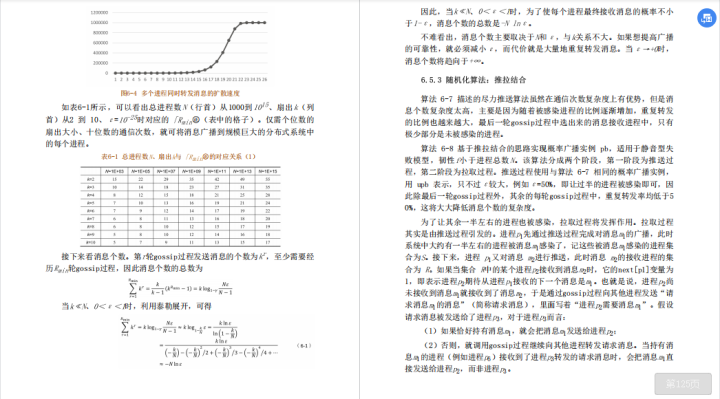


![[附源码]计算机毕业设计毕业生就业管理系统Springboot程序](https://img-blog.csdnimg.cn/6984e5400e57446b83e8a554a38b3e02.png)
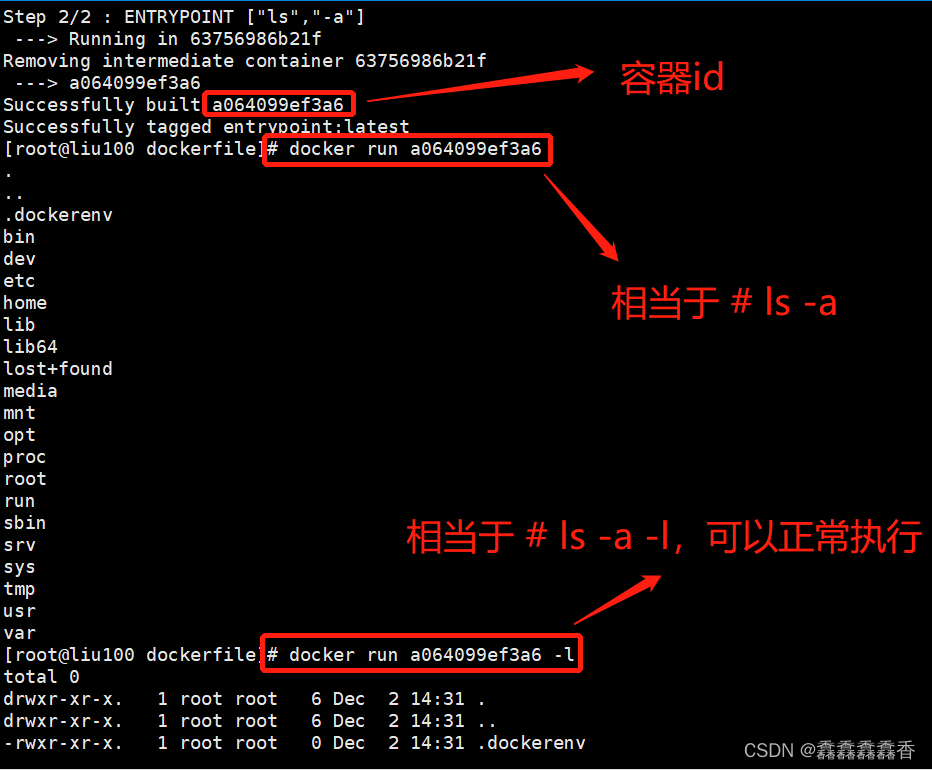





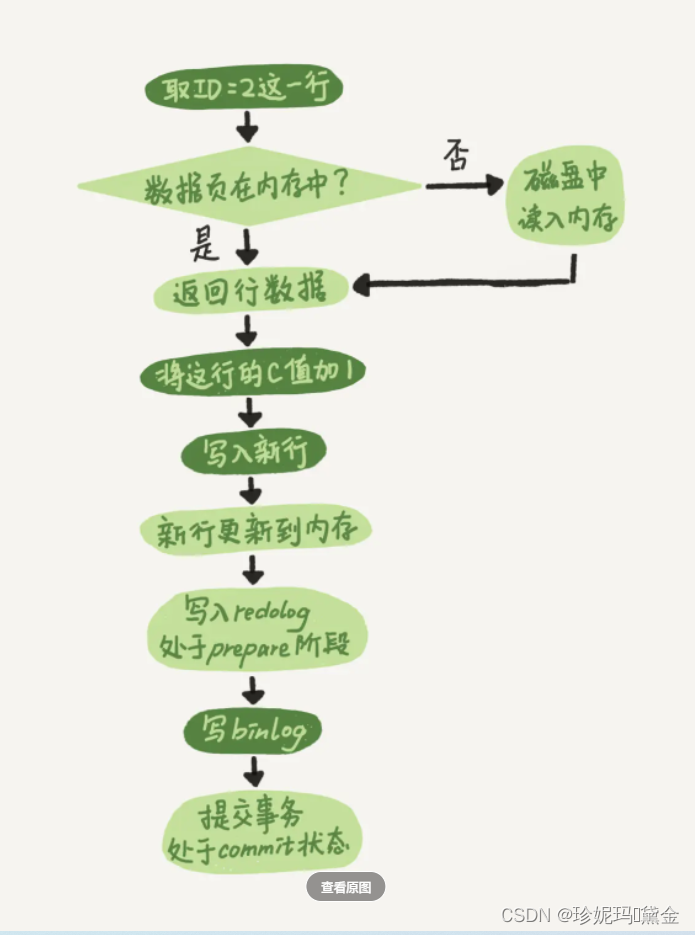
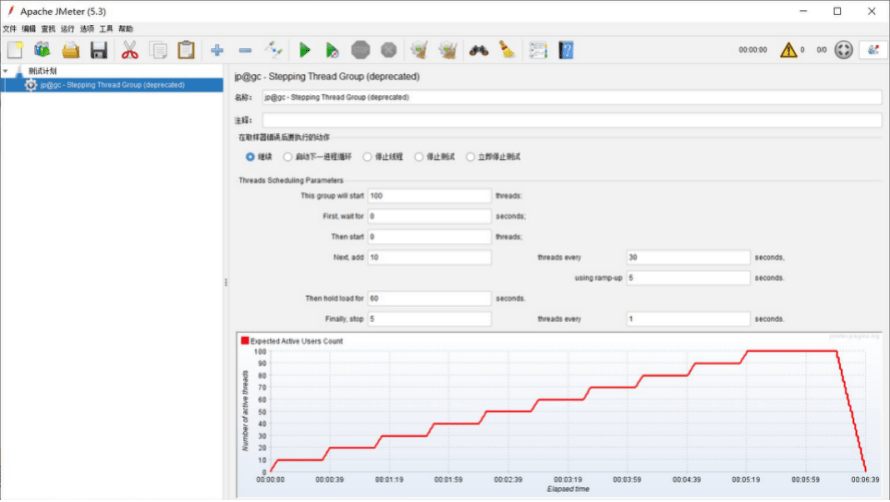

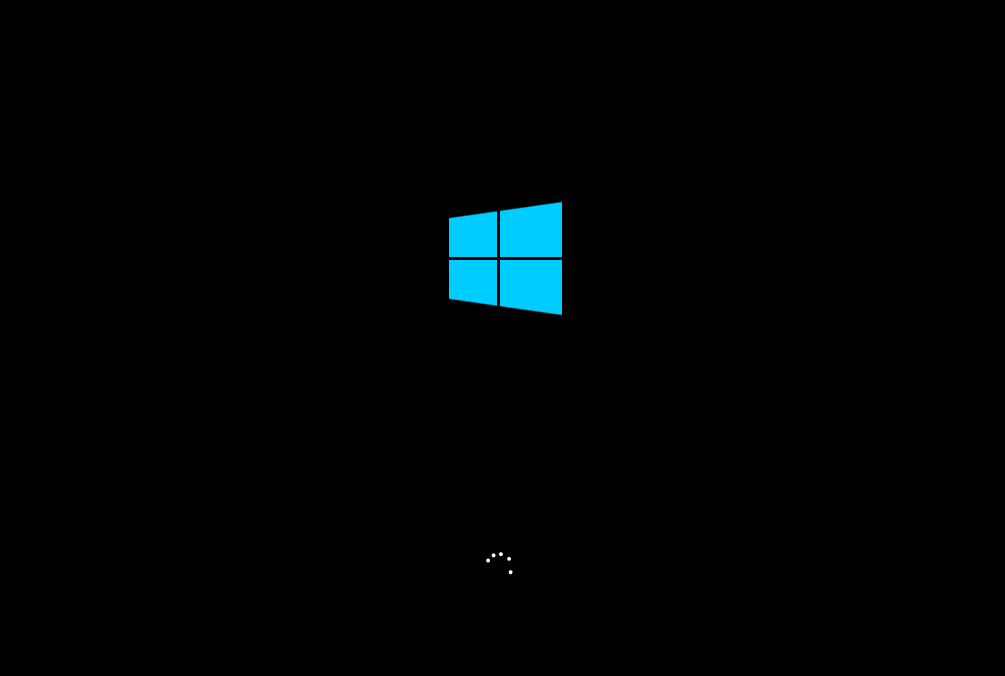
![深入URP之Shader篇2: 目录结构和Unlit Shader分析[上]](https://img-blog.csdnimg.cn/81ca27a90ef149308c63722e5078bd1f.png)
